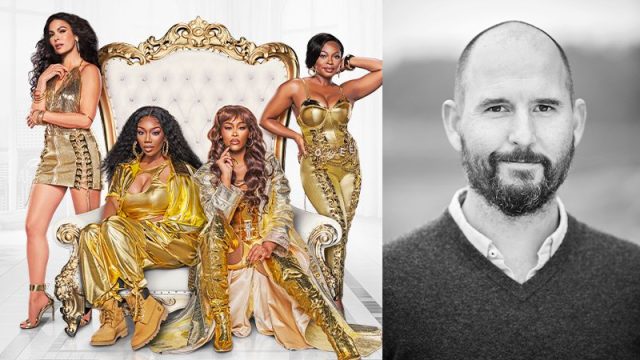The musical drama series Queens, featuring Brandy, Naturi Naughton, Nadine Velazquez, and Eve J. Cooper, is currently airing on ABC and ComingSoon was able to speak with the show’s production designer, P. Erik Carlson, who shared some fun behind-the-scenes info about the project.
RELATED: HBO Max Renews Sweet Life: Los Angeles for Season 2
The drama Queens, which centers on four women now in their 40s who formed a hip-hop group together in the ’90s. They “reunite for a chance to recapture their fame and regain the swagger they had” back in the day, per the official description. Scandal writer Zahir McGhee serves as series creator and EP.
Carlson’s career has spanned 20 years in the film and television industry. His most notable credits include Desperate Housewives, where he earned two Emmy nominations and an Art Director’s Guild Award nomination, The Majestic, State of Affairs, SIX, and Manhunt: Unabomber.
Jeff Ames: What led you to become a production designer?
P. Erik Carlson: Synchronicity I guess. I was taking a class on Design Theory in my final year of undergraduate Architecture school. In that class, we were studying Blade Runner, which happened to be my favorite movie. We took a deep dive into the set design of the film and what those design choices meant. I was fascinated by how the sets pushed and told a story in their own way about what it meant to be human. Before that class, I just thought the film had a “cool look.” I hadn’t given much thought to how a design of a film could tell a story on its own.
At the same time, I was taking a class on Systems and Analysis, where you study the sizing of plumbing & HVAC systems and are required to learn building code and zoning laws. I was not a fan. I was naturally drawn to the freedom and the idea of theoretical design involved film. I was also intrigued by the idea that every project was different, and that each project would push you to learn about different styles of architecture or cultures or professions, etc.
What was it about Queens that made you want to work on it?
I liked that it was unlike anything I had worked on in the past, in many ways. I appreciate how the series leads and represents intersectional diversity among strong female characters. This show represents a culture that I appreciate but did not grow up in, and I knew that I would pressure myself and my team to learn, grow and make the show as real and authentic as possible.
What was the most challenging aspect of Queens and how did you overcome that?
Our showrunner, Zahir’s scripts are all very grand in scale. So, I’d say the most challenging aspect of the series is trying to match the quality of what’s written on the page, in the time we have to create it. We film an episode in roughly nine days, so more often than not our Art/Construction & Set Dressing crews work six to seven days a week to keep up with the rapid pace of production. We have overcome it so far (knock on wood!), solely because of the incredibly talented crew I have in each of those departments. There have been several times in the first several episodes where we have been just finishing a set when the camera shows up to film it!
RELATED: Sofia Boutella to Star in Zack Snyder’s Sci-Fi Movie Rebel Moon
Do you have any fun, behind-the-scenes stories about the making of Queens?
There have certainly been some interesting BTS stories on this show, most of which I can’t talk about of course. One fun thing to look for on a set though would be in our Recording Studio set that we built on stage. In the background of the Control Room is a two-inch 24 Track Tape Machine that we have on rental from a recording studio here in Atlanta. That Tape Machine recorded the original Michael Jackson Thriller album, it’s a genuine piece of music history!
What were some of the things you learned from Queens that you’re excited to apply to future endeavors?
One set I had not designed yet in my career was a big arena concert stage. We will be doing several concerts throughout this series. Like most unknown things in life, I was nervous about the logistics of how to create the magnitude of an arena concert in just a matter of days.
Obviously, it takes significant coordination between different show departments, as well as outside vendors. I’m excited to say that we have worked out a pretty good system thus far and that knowledge is certainly something I can take with me for future projects.
Do you have any other projects coming up that you can share with us?
I don’t have anything lined up after Queens, which takes me into January of 2022, but looking forward to something amazing!










